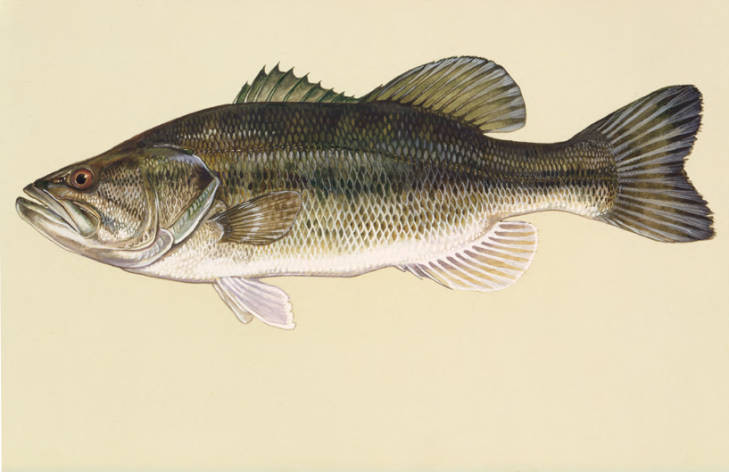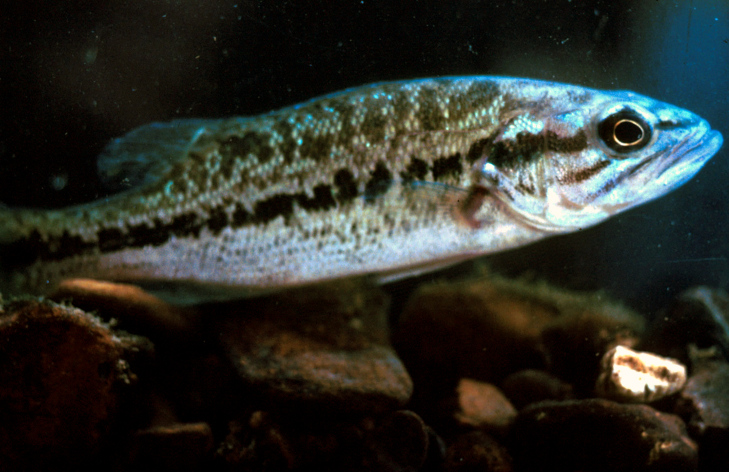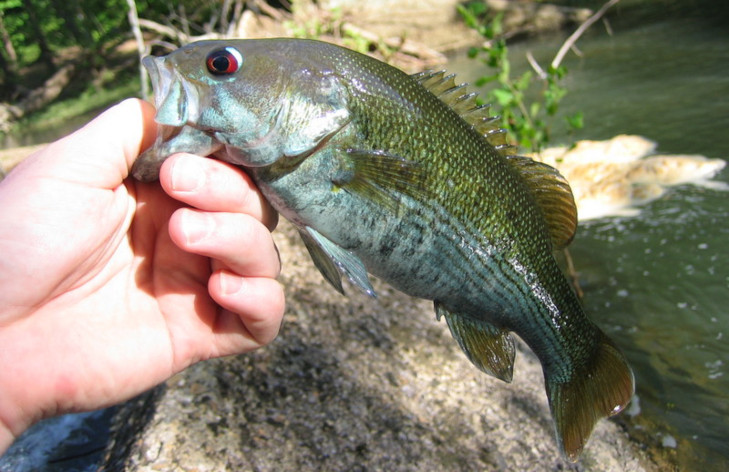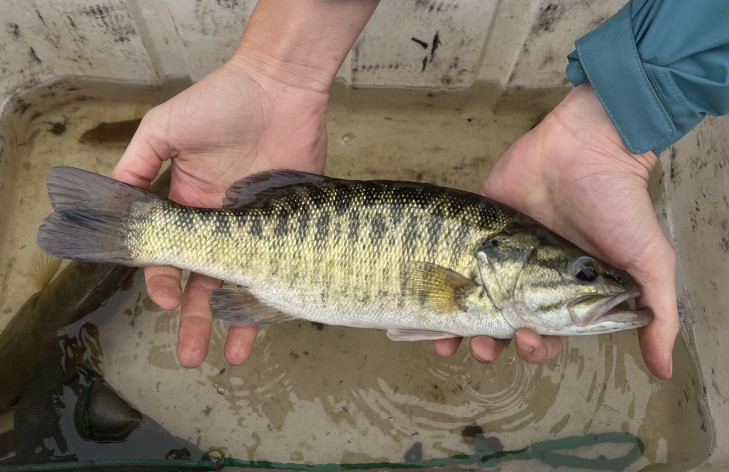There is no denying bass have a hold on American anglers. Their native and introduced range encompasses all 50 states. Of those states, eight claim a freshwater bass species as their state fish. A win in the right competitive bass fishing tournament could net you up to a million dollars, or airtime on national television.
Like many anglers, bass fishing has been among my habits since I started casting my neighborhood waters as a kid. But in recent seasons, I’ve begun tuning into the wider world of bass waters and family.
As the centerpiece of the North American fishing world, the “bass” name is invoked quite a bit to apply to several families of fish more complex than many anglers realize. For example, the black bass group, which includes the well-known smallmouth and largemouth bass, also encompasses dozens of other bass species with much smaller footprints. And if you want to hear something sure to deflate some egos, black bass aren’t actually bass at all, but a member of the sunfish family.
Following the unofficial angling traditions of taxonomic brevity and spotty naming accuracy, this guide will give a broad overview of the most popular types of freshwater black bass species in America, with mentions of some of the better-known smaller species.
Types Of Bass And How To Identify Each

Largemouth bass
There is a good shot you are one of the ten million people who primarily target largemouth annually. This types of bass is the poster child of American angling and the centerpiece of a multi-billion-dollar fishing industry for good reason. Their availability, appetite, spunk and the allure of occasionally reaching football-like proportions check all of the boxes for feeding fishermen dopamine.
Identifying largemouth bass
- Jaw extends beyond the eye
- Often a dark lateral line
- Deep notch between the spiny and soft dorsal fins
Habitat and behavior
Largemouth bass can be found in every state in the country. Their preference for habitat and forage varies widely depending on location and season. Like most black bass species, they are spring spawners. Males will create beds in the substrate where females will lay their eggs, then protect the eggs and recently hatched fry until the young disperse.
The largemouth holds the title for producing the biggest black bass specimen on record—a 22-pounder. The ability to reach trophy sizes depends largely on the available food sources in a system. When available, bass will gorge on larger meals like shad, frogs, mice, and even small waterfowl.

Smallmouth bass
The largemouth’s observantly-named cousin is the runner-up for most targeted bass species. Largely considered one of the pound-for-pound best fighting fish in freshwater, the smallmouth has an equally dedicated legion of anglers hunting them down every week of the year.
Identifying smallmouth bass
- Upper jaw does not extend past the eye
- Shallow notches between spiny and soft dorsal fins
- Distinct vertical bars on flanks and cheeks
Habitat and behavior
Smallmouth are often referred to as a “coolwater” fish. They can thrive in larger lakes and rivers alongside largemouth bass, but can also be found in smaller, faster-flowing streams. Of the larger water bodies, smallies prefer rocky or sandy substrate with access to cover like larger rocks or wood structures. They do not have as wide a diet preference as largemouth, but will feed voraciously on smaller baitfish, crustaceans, and aquatic insects.

Spotted bass
Often confused with largemouth bass, spotted bass are actually a different species with a few unique identifiers and a more limited range. Though their ceiling for size is lower, anglers generally credit spotted bass for being a harder-fighting bass. They may spend their entire existence getting compared to the largemouth, but spotted bass are in a league of their own, and present a good challenge for any angler trying to up their species count.
Identifying spotted bass
- Upper jaw does not extend past the middle of the eye
- Shallow notch between the spiny and soft dorsal fins
- Dark lateral line accented by black blotches along flank
- Dark tooth patch on tongue
Habitat and behavior
Spotted bass are native to the Mississippi River basin from Ohio to the Gulf of Mexico, as well as parts of Texas. They can be found alongside largemouth bass, further complicating their identification for anglers who come across both. As opportunistic predators, their feeding habits are also fairly similar to largemouth.

Guadalupe bass
As the Texas state fish, the Guadalupe bass is the source of a special pride for local anglers. It doesn’t reach the size or scale of the state’s more targeted largemouth species, but its rarity and home ties make it an important species. Guadalupe bass have faced threats from habitat degradation and the introduction of non-native bass, though focused conservation efforts have been working to strengthen their numbers once more.
Identifying Guadalupe bass
- Upper jaw doesn’t extend past the middle of the eye
- Shallow notch between the spiny and softer dorsal fins
- Tooth patch on tongue
- Dark lateral stripes
Habitat and behavior
The specific native range of the Guadalupe bass includes the upper Guadalupe, Colorado, and San Antonio rivers, as well as the headwaters of the Brazos. They are adapted to small streams and max out at around three pounds in size. Within these systems, Guadalupe bass feed mostly on aquatic invertebrates and small fish.
Guadalupe bass are listed as near threatened by the IUCN (International Union for Conservation of Nature). Introduced smallmouth bass have hybridized heavily with Guadalupe bass in some systems, wiping out the species genetically. Habitat issues stemming from development and misuse of water resources have also contributed to the plight of Guadalupe bass.

Redeye bass
The redeye bass has a cult-like following among Southeast anglers. The fish run smaller than their more targeted relatives, but their adaptations to small streams and aggressive feeding habits make them an ultimate light-tackle fish. If you’re a fan of smaller, forested, unpressured streams, seeking out redeyes with ultralight spinning gear or a fly rod is hard to beat.
Identifying redeye bass
- Upper jaw does not extend past the eye
- Little dark spots form horizontal lows below the lateral line
- Very shallow notch between spiny and soft dorsal fins
Habitat and behavior
Redeye bass are mostly found in the southeastern U.S.—specifically North Carolina, South Carolina, Georgia, Tennessee, and Alabama. These states partly include their native range as well as introduced waters. They are primarily stream-dwellers and feed on small fish, crustaceans, and aquatic insects in these systems.
There are several subspecies of redeye bass distributed throughout their native range. They are almost all threatened by habitat loss and hybridization with non-native bass.

Shoal bass
Despite their smaller size, shoal bass are another pound-for-pound fighter. Like redeye or Guadalupe bass, shoal bass have an impassioned angling following, driven by those who wish to break away from larger pressured waters and chase native fish.
Identifying shoal bass
- Upper jaw doesn’t extend past the eye
- Shallow notch between spiny and soft dorsal fins
- A lack of red or white coloring on the fins sets them apart from the morphologically similar redeye bass
Habitat and behavior
Shoal bass was just first described in 1999. Their native range in Florida and Georgia has decreased greatly due to habitat degradation and introduced bass, but the species maintains targetable populations in a few streams. Shoal bass feed on small fish and aquatic invertebrates, and are often caught alongside other bass species.
A bass for every angler
From the local lunkers we all know and love to rare small-stream subspecies, the North American bass scene runs deep. There’s a good chance that 99% of anglers won’t encounter the majority of what makes up the black bass family during their angling careers, but it’s important to recognize the diversity as part of what makes these fish so special. Their popularity as a sport fish makes enough of a case, but the expanse of the species drives the point home—there is a bass for everyone.
Feature Image: McKeon Roberts







